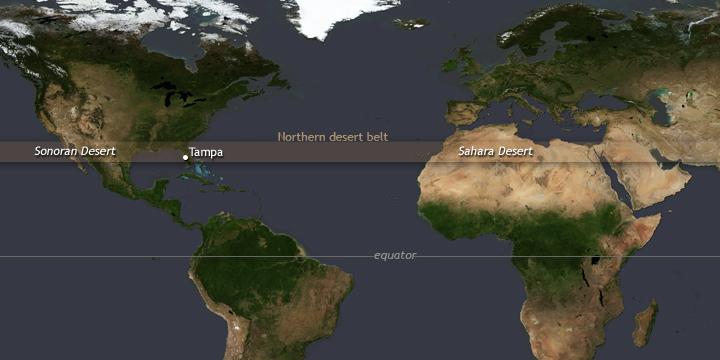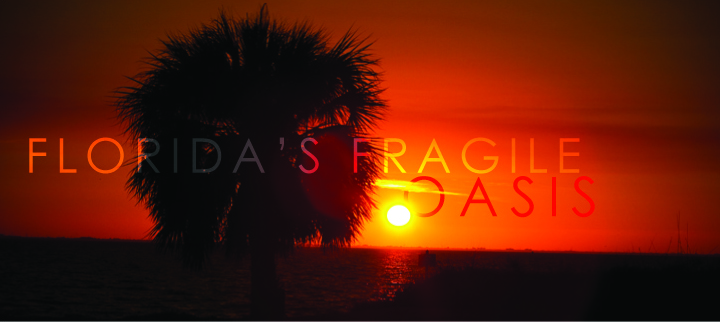
I’m standing with Jerry Seeber in Tampa Bay Water’s surface water treatment plant. Around us, a series of pipes, spouts, funnels, and tanks gurgle, trickle, and drain, shuttling some of the 250 million gallons of water a day from the area’s rivers and reservoir to people’s taps.
It’s a strange backdrop for a geography lesson, but that’s exactly what’s happening. Seeber looks like a wizard casting a spell as his thick index finger traces an invisible line across an imaginary map. The line starts in the Sonoran Desert, which straddles the Arizona-Mexico border, and races due east across nearly 7,500 miles until it hits Cairo, Egypt, on the far edge of the Sahara.
“Tampa Bay sits right on that line,” Seeber explains. In case the lesson isn’t clear, Seeber continues: “If Florida weren’t a peninsula, this place would be a desert.”
He’s right. Surrounded by ocean moisture, Florida is an oasis sitting right in the middle of the desert belt, which traverses the subtropical latitudes north and south of the equator. But even oases sometimes go dry.

Surrounded by ocean, Florida is an oasis in the Northern Hemisphere “desert belt.” Located between the tropics and the mid-latitudes, the sub-tropical desert belt occurs where, on average, air is sinking from high altitudes back toward the surface. As air sinks, it tends to warm, and moisture evaporates. (Map by NOAA climate.gov team, based on NASA Blue Marble data.)
In the 1980s and 1990s, a dramatic population boom and a reliance solely on groundwater tested the limits of the oasis. Learning from those lessons, Tampa Bay Water has spent the past 20 years diversifying their water supply to include surface and desalinated seawater.
The diversification was necessary, but it posed new risks: surface water supplies are vulnerable to seasonal climate shifts. Tampa Bay Water has been a leader in the region for figuring out how to use seasonal forecasts to reduce their vulnerability during dry years and to maximize the benefit of the wet years.
The future might provide even more challenges for the water provider, though. Without innovative thinking and planning, the limits of the oasis might again be tested by further population growth and climate change.


